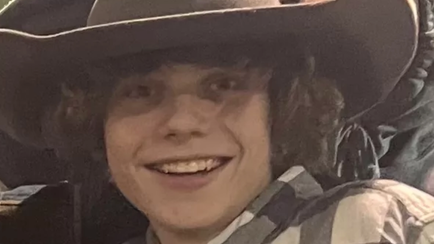
var label_63da9518e4b07c0c7e073952 = "ctx-wait-63da9518e4b07c0c7e073952"; var defer_63da9518e4b07c0c7e073952 = document.currentScript; console.time(label_63da9518e4b07c0c7e073952); window.waitForGlobal( () => window.HP && window.HP.params && window.HP.params.clientUUID && window.localStorage && defer_63da9518e4b07c0c7e073952 && defer_63da9518e4b07c0c7e073952.parentElement.dataset.ready === "true", () => { console.timeEnd(label_63da9518e4b07c0c7e073952); “The dodo is a symbol of man-made extinction,” said Ben Lamm, a serial entrepreneur and co-founder and CEO of Colossal. The company has formed a division to focus on bird-related genetic technologies.The last dodo, a flightless bird about the size of a turkey, was killed in 1681 on the Indian Ocean island of Mauritius.The Dallas company, which launched in 2021, also announced Tuesday it had raised an additional $150 million in funding. To date, it has raised $225 million from wide-ranging investors that include United States Innovative Technology Fund, Breyer Capital and In-Q-Tel, the CIA’s venture capital firm which invests in technology.Colossal Biosciences has raised an additional $150 million from investors to develop genetic technologies that the company claims will help to bring back some extinct species, including the dodo and the woolly mammoth. (AP Photo/Matt Dunham, File)via Associated PressAdvertisement The prospect of bringing the dodo back isn’t expected to directly make money, said Lamm. But the genetic tools and equipment that the company develops to try to do it may have other uses, including for human health care, he said.For example, Colossal is now testing tools to tweak several parts of the genome simultaneously. It’s also working on technologies for what is sometimes called an “artificial womb,” he said.The dodo’s closest living relative is the Nicobar pigeon, said Beth Shapiro, a molecular biologist on Colossal’s scientific advisory board, who has been studying the dodo for two decades. Shapiro is paid by the Howard Hughes Medical Institute, which also supports The Associated Press’ Health and Science Department.Her team plans to study DNA differences between the Nicobar pigeon and the dodo to understand “what are the genes that really make a dodo a dodo,” she said.The team may then attempt to edit Nicobar pigeon cells to make them resemble dodo cells. It may be possible to put the tweaked cells into developing eggs of other birds, such as pigeons or chickens, to create offspring that may in turn naturally produce dodo eggs, said Shapiro. The concept is still in an early theoretical stage for dodos
Because animals are a product of both their genetics and their environment — which has changed dramatically since the 1600s — Shapiro said that “it’s not possible to recreate a 100% identical copy of something that’s gone.”Other scientists wonder if it’s even advisable to try, and question whether “de-extinction” diverts attention and money away from efforts to save species still on Earth.“There’s a real hazard in saying that if we destroy nature, we can just put it back together again — because we can’t,” said Duke University ecologist Stuart Pimm, who has no connection to Colossal.“And where on Earth would you put a woolly mammoth, other than in a cage?” asked Pimm, who noted that the ecosystems where mammoths lived disappeared long ago.On a practical level, conservation biologists familiar with captive breeding programs say that it can be tricky for zoo-bred animals to ever adapt to the wild
It helps if they can learn from other wild animals of their kind — an advantage that potential dodos and mammoths won’t have, said Boris Worm, a biologist at the University of Dalhousie in Halifax, Nova Scotia, who has no connection to Colossal.“Preventing species from going extinct in the first place should be our priority, and in most cases, it’s a lot cheaper,” said Worm.___The Associated Press Health and Science Department receives support from the Howard Hughes Medical Institute’s Science and Educational Media Group. The AP is solely responsible for all content.
CryptozoologySee Gallery
Source: https://www.huffpost.com/entry/extinct-dodo-technology-plan_n_63da94b9e4b0c2b49ae03032 ... and provided by video-cutter-online.com
No comments:
Post a Comment